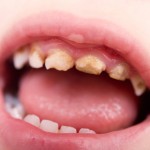
A number of studies have suggested that development defects of enamel could influence caries development in both the primary and permanent dentition although other studies have not shown an association. The aim of this review was to evaluate the association between development defects of enamel (DDE) and dental caries experience in the permanent dentition.
Methods
Searches were conducted in the PubMed, Web of Science, Science Direct, and Embase databases. Epidemiology studies with assessment of likely association between DDE and dental caries in patients aged between 8-19 years that used a population-based sample rather than a clinical convenience sample were considered. Two reviewers independently selected studies, abstracted data and assessed study quality. The pooled effect of DDE on dental caries experience was calculated using a fixed and a random model and meta-regression was carried out to identify heterogeneity sources.
Results
- 7 studies were included with sample sizes ranging from 245 to 3538.
- 3 studies were considered to be at moderate risk of bias and 4 at low risk.
- Three studies were carried out in Brazil, two in Mexico, and one in Sri Lanka and Poland.
- All studies identified a positive association between DDE and caries experience.
- Meta-analysis showed that individuals with DDE had higher pooled odds of having dental caries experience OR = 2.21 (95% CI; 1.3 – 3.54).
- Meta-regression analysis demonstrated that adjustment for socio-demographic factors, countries’ socioeconomic status, and bias (quality of studies) explained the high heterogeneity observed.
Conclusions
The authors concluded: –
A higher chance of dental caries should be expected among individuals with enamel defects.
Comments
When only the 4 low risk studies were analysed the pooled odds ratio for caries in those with DDE increased to OR = 3.92 (95% CI; 2.66 – 5.80). However, all the studies included in this review were cross-sectional and there was a considerable degree of heterogeneity although the meta-regressions demonstrate that socio-demographic factors and study quality could explain this variation. The authors also point out that examination procedures varied across the studies, which could also impact on the findings. In addition dental caries and DDE have some common risk factors such as disadvantaged backgrounds, which would suggest focusing on a common risk strategy rather then a specific condition approach could have greater benefits.
Links
Vargas-Ferreira F, Salas MM, Nascimento GG, Tarquinio SB, Faggion CM Jr, Peres MA, Thomson WM, Demarco FF. Association between developmental defects of enamel and dental caries: A systematic review and meta-analysis. J Dent. 2015 Jun;43(6):619-628. doi: 10.1016/j.jdent.2015.03.011. Epub 2015 Apr 8. Review. PubMed PMID: 25862273.

Is there an association between enamel defects and caries? http://t.co/LLkPEtqqzj
Developmental enamel defects and caries. http://t.co/LLkPEtqqzj
Developmental enamel defects doubles caries risk. http://t.co/LLkPEtqqzj
Caries risk increased in those with developmental enamel defects.
http://t.co/LLkPEtqqzj
Don’t miss – Is there an association between enamel defects and caries? http://t.co/LLkPEtqqzj
[…] Developmental defects of enamel and caries are they associated? […]